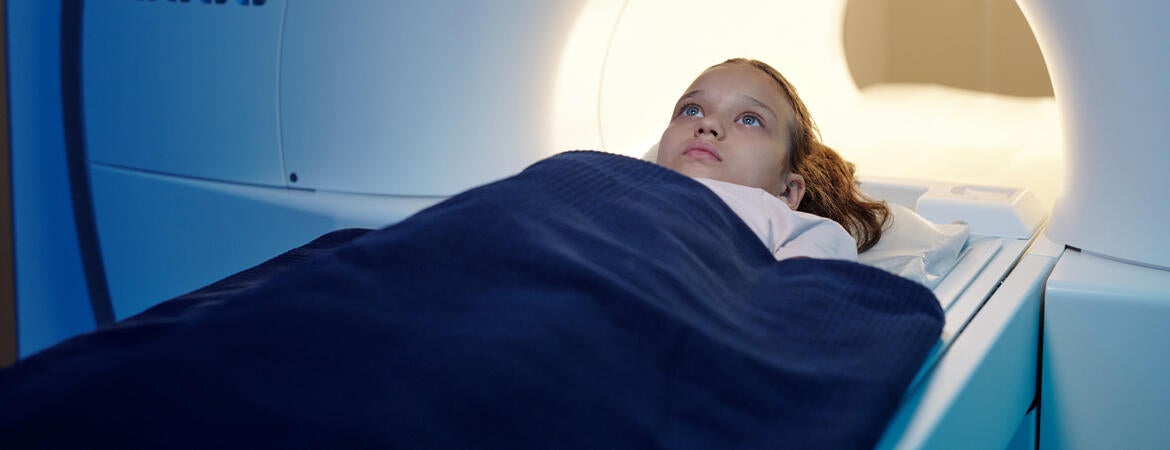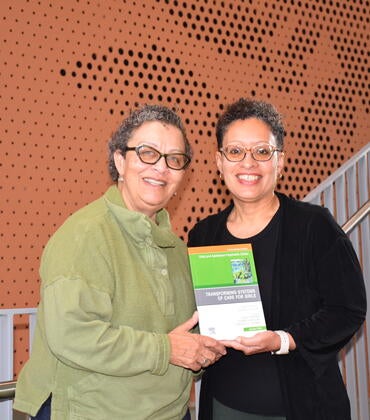
When participating in research studies, moderately anxious or highly anxious children from minoritized groups are likely to be hypervigilant to threat, further compounding the effects of their general state of anxiety, a research study led by a University of California, Riverside, psychologist reports.
The study, which involved the participation of 46 Inland Southern California preadolescent Latina girls (8–13 years), has implications also for children from families with low socioeconomic status.
“Psychological research is often conducted in white, educated, and affluent communities,” said Kalina Michalska, an associate professor of psychology, who led the research team. “People from minoritized groups or people with low income and/or limited access to education are often not exposed to scientific research, and have historically been exploited by science, which contributes to their discomfort or legitimate mistrust.”
In the study, the girls first completed a laboratory testing session during which they and their caregivers reported on family demographics as well as the girls’ behavior, anxiety, and other mental health outcome measures. The girls then completed an emotion processing task while in an MRI scanner. They viewed images of fearful and happy faces projected into the scanner bore while the researchers measured their brain responses.
“Trait anxiety” is a constant state of anxiety. “State anxiety” is defined as a momentary feeling of anxiety, the kind one might experience going to the doctor’s office to learn the results of tests or when giving a public lecture.
The researchers found that among girls with average or high levels of trait anxiety, their state anxiety before being MRI-scanned was associated with greater brain responses — specifically, an increased amygdala-hippocampal response — to fearful faces (threat stimuli) versus happy faces. This means a generally anxious participant experienced high levels of momentary anxiety when situated in a distressing environment, such as the MRI scanner.
“Undergoing an MRI scan is anxiety-inducing not just for children but also, more generally, for people unfamiliar with the scanning environment,” Michalska said.
In the study, which appears in the open access journal BMC Psychiatry, girls who rated their families as having a lower community standing tended to have elevated pre-scan state anxiety, suggesting that factors such as social status can influence children’s reactions to the research environment.
Michalska, an expert on pediatric anxiety disorders, urges neuroimaging researchers to control for state anxiety and help participants from all backgrounds feel as comfortable as possible during testing sessions.
“Without accounting for state anxiety, data from experiments such as ours could be misattributed to temperamental, environmental, or cultural factors rather than apprehension of the research environment,” she said.
According to Michalska, when children who are at risk for anxiety disorder (trait anxiety) are anxious “in the moment” (state anxiety), the differences in brain activity are due to the momentary anxiety, not the anxiety disorder.
“When interpreting the data, it is important not to misattribute the findings to an anxiety disorder or to a whole community when it is only momentary and situational anxiety,” she said. “Brain responses in experiments like ours need to be attributed not necessarily to the fact that the participants are, say, Latina, but to their historical experiences with science. Our participants had high anxiety because they were entering a space that has historically been hostile to them.”
Michalska is hopeful the team’s findings can lead to new conversations about mental health.
“Doctors can change the way they think about patients’ mental health and teachers can think differently about the mental health of their students,” she said. “Our data show that socioeconomic status can play a significant role in patients’ and students’ anxiety and suggest that the scanning environment may be particularly anxiety-inducing for participants who feel marginalized relative to other members of society.”
Next, the researchers plan on measuring social experiences, such as parents’ experiences of ethnic racial discrimination and children’s experiences of the same. The researchers also plan to measure children’s vicarious experiences resulting from watching their parents’ encounters with ethnic racial discrimination.
Michalska was joined in the research by her former graduate student and first author of the paper Dana E. Díaz, now at Columbia University Irving Medical Center in New York, and Wan-Ling Tseng of Yale University in Connecticut.
The research was funded by a grant from the Hellman Fellows Program and a National Institute of Health subaward from the UCR Center for Health Disparities Research.
The title of the research paper is “Pre-scan state anxiety is associated with greater right amygdala-hippocampal response to fearful versus happy faces among trait-anxious Latina girls.”
Header image credit: shironosov/iStock/Getty Images Plus.




